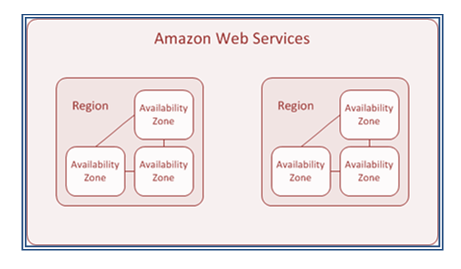Amazon Web Services serves over a million customers with the count increasing every day. Having these many customers spread across the world, it is necessary to set up a global infrastructure that provides a cost effective, low latency and high performance service.
Amazon Cloud Computing, is inherently based on choosing a global region in the cloud, for moving your business applications. It affects all aspects of your business like computing, networking, application services, storage and content delivery. It also facilitates business continuity and disaster recovery, in case of unexpected or planned events occurring, both natural and man-made.
At the time of writing this article, there are 11 regions, 30 availability zones, 53 edge locations that are available for the AWS global users. The GovCloud region is exclusively used by the government agencies and organizations.
When you start using the Amazon Web Services, two terms will determine the performance, cost and impact your throughput – Regions and Availability Zones. Every service that you utilize in the Amazon Cloud is directly or indirectly impacted by the selection of the region and the availability zone during your AWS account setup.
AWS Regions and Availability Zones
AWS houses the cloud computing resources in highly available data center locations called a region. Each region is completely independent and isolated from one another. They can communicate only through the Internet. AWS does not replicate the resources across the regions automatically. Hence, not all the services are available in all the regions.
Each region contains multiple distinct locations called Availability Zones or AZs. Each Availability Zone is isolated but is connected through low-latency network connectivity to other zones in the same region. This is desinged to make your applications available in case of a failure of a single location.
Below is the table showing all the regions, AZs and their locations currently available in the AWS Cloud.
*Note: The China (Beijing) Region is currently under limited preview. Access to the region is now by invitation only. Customers with existing AWS credentials will not be able to access resources in the new Region, and vice versa.
There are other terms which are used in association with the AWS Global Infrastructure.
AWS Endpoints – In order to access any service, region and/or availability zones, you have to specify the Endpoints. These are basically URLs which act as entry points for a web service.
AWS Edge Locations – These are located in major cities and is dominately used by the Amazon CloudFront Content Delivery Network (CDN), to distribute the content to the users.
To know more about the Amazon Web Services Global Infrastructure on the cloud, you contact us at info@sysfore.com or call us at +91-80-4110-5555.


